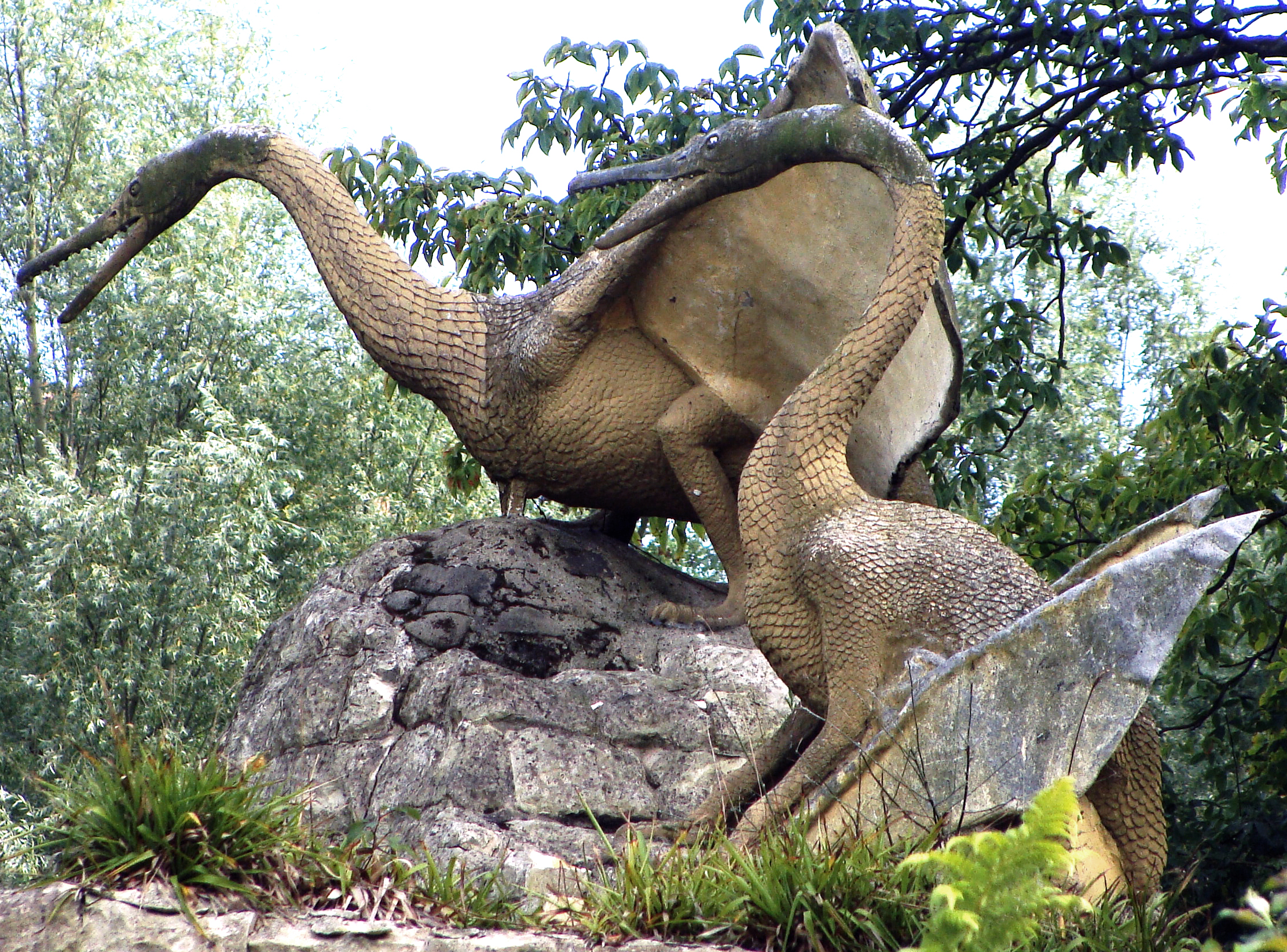|
Anhanguera Cuvieri
''Cimoliopterus'' is a genus of pterosaur that lived during the Late Cretaceous in what is now England and the United States. The first known specimen, consisting of the front part of a snout including part of a crest, was discovered in the Grey Chalk Subgroup of Kent, England, and described as the new species ''Pterodactylus cuvieri'' in 1851. The Specific name (zoology), specific name ''cuvieri'' honoured the palaeontologist George Cuvier, and the genus ''Pterodactylus'' was then used for many pterosaurs of species that are no longer thought to be closely related. It was among the first pterosaurs to be depicted as sculptures, in Crystal Palace Park in the 1850s. The species was subsequently assigned to various other genera, including ''Ornithocheirus'' and ''Anhanguera (pterosaur), Anhanguera''. In 2013, the species was moved to a new genus, as ''Cimoliopterus cuvieri''; the generic name ''Cimoliopterus'' is derived from the Greek words for "chalk" and "wing". Other specimens ... [...More Info...] [...Related Items...] OR: [Wikipedia] [Google] [Baidu] |
Cenomanian
The Cenomanian is, in the International Commission on Stratigraphy's (ICS) geological timescale, the oldest or earliest age (geology), age of the Late Cretaceous epoch (geology), Epoch or the lowest stage (stratigraphy), stage of the Upper Cretaceous series (stratigraphy), Series. An age is a unit of geochronology; it is a unit of time; the stage is a unit in the stratigraphic column deposited during the corresponding age. Both age and stage bear the same name. As a unit of geologic time measure, the Cenomanian Age spans the time between 100.5 and 93.9 million years ago (Mya). In the geologic timescale, it is preceded by the Albian and is followed by the Turonian. The Upper Cenomanian starts around at 95 Mya. The Cenomanian is coeval with the Woodbinian of the regional timescale of the Gulf of Mexico and the early part of the Eaglefordian of the regional timescale of the East Coast of the United States. At the end of the Cenomanian, an anoxic event took place, called the Cenomani ... [...More Info...] [...Related Items...] OR: [Wikipedia] [Google] [Baidu] |
Kent
Kent is a Ceremonial counties of England, ceremonial county in South East England. It is bordered by Essex across the Thames Estuary to the north, the Strait of Dover to the south-east, East Sussex to the south-west, Surrey to the west, and Greater London to the north-west. The county town is Maidstone. The county has an area of and had population of 1,875,893 in 2022, making it the Ceremonial counties of England#Lieutenancy areas since 1997, fifth most populous county in England. The north of the county contains a conurbation which includes the towns of Chatham, Kent, Chatham, Gillingham, Kent, Gillingham, and Rochester, Kent, Rochester. Other large towns are Maidstone and Ashford, Kent, Ashford, and the City of Canterbury, borough of Canterbury holds City status in the United Kingdom, city status. For local government purposes Kent consists of a non-metropolitan county, with twelve districts, and the unitary authority area of Medway. The county historically included south-ea ... [...More Info...] [...Related Items...] OR: [Wikipedia] [Google] [Baidu] |
Targaryendraconia
Targaryendraconia is an extinct clade of lanceodontian pterosaurs that lived from the Early to Late Cretaceous period in Europe, North America, South America, and Australia. Classification Below is a cladogram following a topology by Pêgas and colleagues in 2019. In their analysis, they recovered Targaryendraconia as the sister taxon of the clade Anhangueria, both of which are within the more inclusive group Ornithocheirae. Targaryendraconia is split into two families: the Targaryendraconidae, which contains '' Aussiedraco'', '' Barbosania'', and '' Targaryendraco'', and the Cimoliopteridae, which contains '' Aetodactylus'', '' Camposipterus'', and '' Cimoliopterus''.Rodrigo V. Pêgas, Borja Holgado & Maria Eduarda C. Leal (2019) On ''Targaryendraco wiedenrothi'' gen. nov. (Pterodactyloidea, Pteranodontoidea, Lanceodontia) and recognition of a new cosmopolitan lineage of Cretaceous toothed pterodactyloids, Historical Biology, Contrastingly, a study by Alexander Averianov ... [...More Info...] [...Related Items...] OR: [Wikipedia] [Google] [Baidu] |
Cimoliopteridae
Targaryendraconia is an extinct clade of lanceodontian pterosaurs that lived from the Early to Late Cretaceous period in Europe, North America, South America, and Australia. Classification Below is a cladogram following a topology by Pêgas and colleagues in 2019. In their analysis, they recovered Targaryendraconia as the sister taxon of the clade Anhangueria, both of which are within the more inclusive group Ornithocheirae. Targaryendraconia is split into two families: the Targaryendraconidae, which contains ''Aussiedraco'', '' Barbosania'', and ''Targaryendraco'', and the Cimoliopteridae, which contains ''Aetodactylus'', ''Camposipterus'', and ''Cimoliopterus''.Rodrigo V. Pêgas, Borja Holgado & Maria Eduarda C. Leal (2019) On ''Targaryendraco wiedenrothi'' gen. nov. (Pterodactyloidea, Pteranodontoidea, Lanceodontia) and recognition of a new cosmopolitan lineage of Cretaceous toothed pterodactyloids, Historical Biology, Contrastingly, a study by Alexander Averianov in 2025 ... [...More Info...] [...Related Items...] OR: [Wikipedia] [Google] [Baidu] |
Ornithocheiran
Ornithocheiromorpha (from Ancient Greek, meaning "bird hand form") is a group of pterosaurs within the suborder Pterodactyloidea. Fossil remains of this group date back from the Early to Late Cretaceous periods (Valanginian to Turonian stages), around 140 to 92.5 million years ago. Ornithocheiromorphs have been discovered worldwide except Antarctica, though most genera have been recovered in Europe, Asia and South America. They were the most diverse and successful pterosaurs during the Early Cretaceous, but throughout the Late Cretaceous they were replaced by pteranodontians and azhdarchoids. The Ornithocheiromorpha was defined in 2014 by Andres and colleagues, and they made Ornithocheiromorpha the most inclusive clade containing ''Ornithocheirus'', but not ''Pteranodon''. Ornithocheiromorphs are considered to be some of the largest animals to have ever flown. Members of this group are also regarded to have some of the largest pterosaur wingspans, such as the one estimated for t ... [...More Info...] [...Related Items...] OR: [Wikipedia] [Google] [Baidu] |

